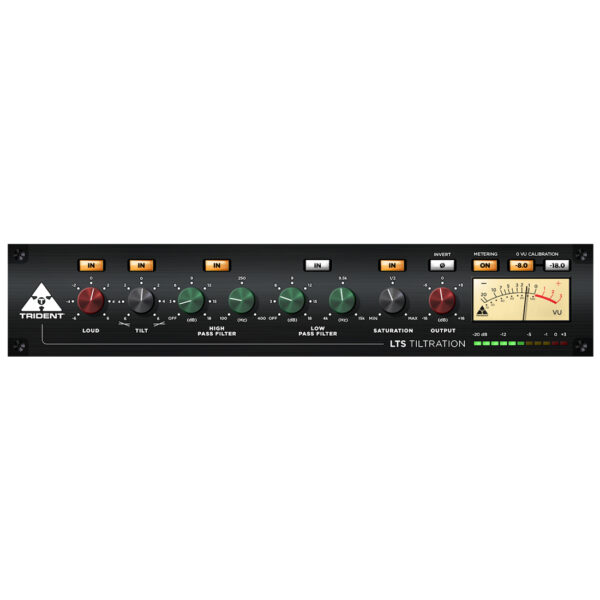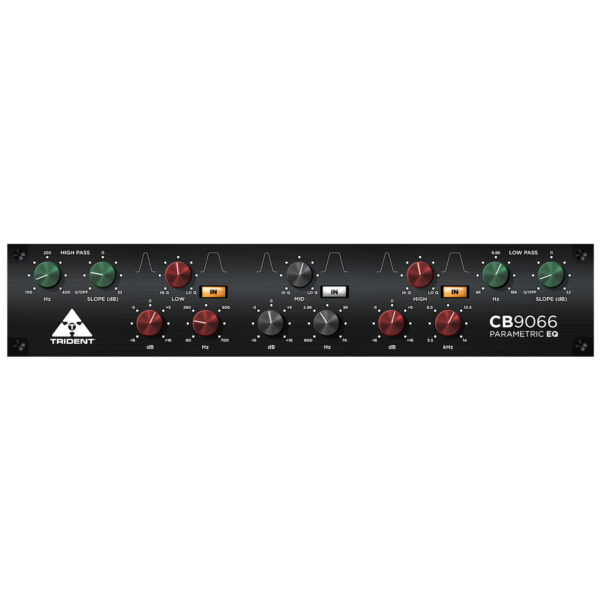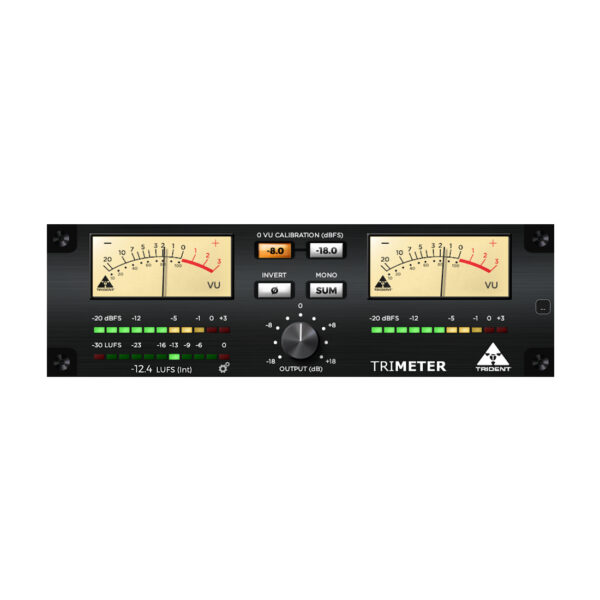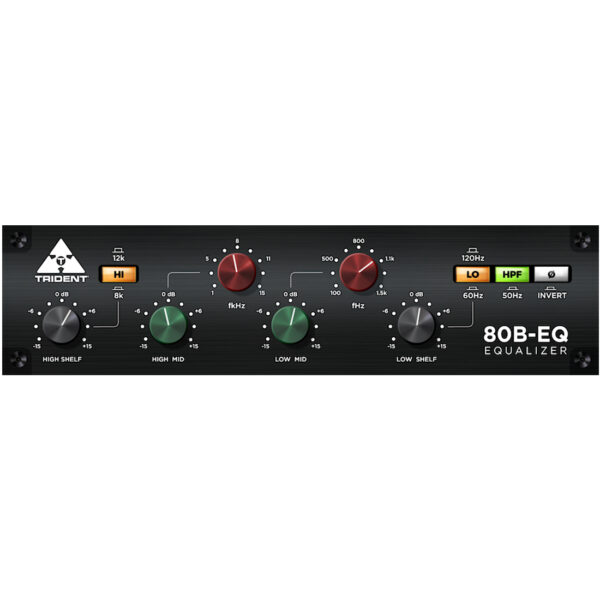- Overview
- Video
- Release Notes
- Reviews
- Quick Start
- Specs
- FAQs
- Manual
Overview

Tiltration EQ Plugin Demo
Use the link above to download a 7 day demo of the LTS Tiltration Plugin
Saturator Tilt EQ Plugin
The LTS Tiltration from Trident Audio Developments is an entirely new design concept, incorporating multiple features from our various brands to bring another unique plugin to the pro audio market.
The Tiltration combines a newly designed Saturation processor, utilizing 8x digital oversampling to provide authentically modeled Trident harmonic distortion on any audio source. Onboard you will find a dual-stage Tonelux Loudness and Tilt EQ for enhanced flexibility. Additionally, we incorporate Sallen-Key variable High & Low Pass filters, with continuous variable slopes of up to 18 dB, all of which come together to provide unparalleled versatility and creative control. A unique VU meter, with switchable 0 VU calibration between -18 or -8 dBFS, assists in achieving optimal recording levels, while a PPM peak monitor detects transient signals and alerts to 0 dBFS clipping. A new double-click function allows you to display and manually enter data into each control knob making your frequency selection, as well as boost and cut, faster and more accurate. Finally, an output gain control and polarity selector round out the feature set, making this plugin a great tool for many different studio applications.
USES:
The Tiltration can be used in countless applications, from adding lush harmonics to your digital tracks for added warmth or even to add distortion to your guitar, bass, or vocal tracks for an analog effect. The variable-slope high and low pass filters add further control, helping to create completely different sounds and musical tones. Adding the dual-mode Tilt and Loudness EQ can add sparkle to any dull tracks easily with just one turn of a knob!
Every feature on the Tiltration has a bypass control that allows you to use each feature independently and quickly allows you to audition your changes, or bypass those you do not want to use.
For those who already have our Trident CB-9066 and Series 80B plugins, adding the TILTRATION adds another dimension when used in tandem with the EQs by adding harmonics and advanced tone-shaping, giving you the ultimate EQ chain.
Other uses are:
- Smoothing out vocal tracks
- Adding crunch or distortion to guitars or other sources
- Adding analog warmth to an entire mix or mastering project
- Precision equalizing and tone shaping with easy quick data entry
- Eliminating unwanted noise
- Adding sparkle to a dull guitar track due to old strings
- Adding character to electronic instruments or parts
Trident Audio Developments Plugin software models make an impressive addition to any digital audio workstation (DAW) application, on either Mac or PC. Available in VST3, AAX, AU (Mac only) formats, and PC Platforms.
Downloaded separately, Mac and PC versions may be installed as a free 7-day trial prior to purchasing and activating a license. A purchased license can be used on up to two systems or activation locations, on either Mac or PC.
The Digital Editions Series Tiltration uses our ground-breaking modeling techniques, and our new AWA (Advanced Wave Analysis), Trident’s proprietary DSP engine.
Taking full advantage of this signal processing technology ensures every Trident Plugin is true to the original brand and provides the most efficient and least CPU demanding Plugins available today, meaning multiple instances of Trident Plugins may be run at any time, with the least possible negative effect on your computer’s performance.
The Trident Digital Edition Series
In today’s recording environments, many in the recording world are working entirely within the digital domain. We believe working in the digital domain should not come at a cost for those who choose to work with some of the most iconic outboard gear in music production history.
With a rich analog recording history of over 50 years, Trident Audio Developments are perfectly suited to offer the new Trident Digital Editions Plugins, which bridge that gap between analog and digital recording, while accurately recreating the historic analog gear of yesterday for the digital domain. The Trident Digital Editions, give those the opportunity to work with the iconic gear that produced so many classic hit records.
Videos
Version 2.0.1 – 27 October 2024
• Fixed issue where metering functions could potentially fail to calibrate correctly during initial launch
Version 2.0.0 – 26 July 2024
• Replaced iLok licensing system with a newer and more flexible platform, powered
by Moonbase
Version 1.2.0 –29 October 2023
macOS (x86_64 & arm64) Features and Fixes
• Added native support and performance optimization for Apple Silicon (arm64)
• Universal compatibility with Intel (x86_64) and Apple M-series (arm64) platforms
• Requires macOS version 10.13 (High Sierra) or later
Version 1.0.0.0 – 08 July 2021
macOS / Windows x64 / Windows x86
Details
Initial release
Known Issues
None
Reviews

LTS Plugin — Reviews
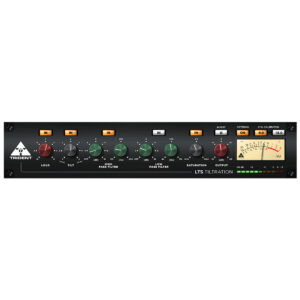
GEAR NEWS :: Trident LTS Tiltration: Dieses Plug-in kombiniert Saturator und Tilt EQ by Lyubomir Dobrev
Like the other big console manufacturers, (API, SSL, Neve) Trident doesn’t miss a beat in maintaining its relevance with plug-ins. Back in February, the console maker released its first products in this vein, emulations of its CB9066 and 80B hardware EQs. Trident has just followed up that release with LTS Tiltration – a new concept incorporating old and brand new designs into a formidable “analog mojo” plug-in. READ MORE
Quick Start Guide
Quick Start Guide: Installation in Five Easy Steps
Step 1: Download the correct installer for your system from the Downloads page. If you are
unsure which installer to choose, scroll down to System Requirements for more details on
selecting the most suitable version.
Step 2: Close any currently open instances of your DAW or music creation applications.
Step 3: Open the downloaded disk image (macOS) or executable (Windows) and doubleclick
on the installer file to begin the installation process. Follow the on-screen prompts.
Step 4: Once the installation process is complete, open your DAW application. Note that
there may be a slight delay while your system detects and verifies your newly installed
plugin for the first time.
Step 5: Open your new plugin within your DAW session and click the Activate Plugin
button. Follow the on-screen prompts which will automatically open a browser window.
Select either the Start Trial or Use License option and follow the prompts to activate.
System Requirements
Apple macOS
• Apple Audio Unit (AU), Steinberg VST3, and Avid AAX plugin formats
• Requires macOS 10.13 (High Sierra) or greater
• Native support for Intel (x86_64) and Apple Silicon M-Series (arm64)
Microsoft Windows
• Steinberg VST3 and Avid AAX plug-in formats
• Requires Windows 10 (64-bit) or greater
Should you encounter any problems, please contact us at plugins@pmiaudio.com
Product Specifications
| Feature | Details | Controls | Bypass |
| Loud | Analog Modelled Loudness-style EQ | Level +/- 6 | Yes |
| Tilt | Analog Modelled Tilt EQ | Level 0 to 6 (bi-directional) | Yes |
| High Pass Filter | Variable Slope High Pass Filter | ◼ 100 to 400 Hz ◼ 0/Off to 18 dB/octave | Yes |
| Low Pass Filter | Variable Slope Low Pass Filter | ◼ 4 to 15 kHz ◼ 0/Off to 18 dB/octave | Yes |
| Saturation | Saturation Boost | 0 (Min) to 100 (Max) | Yes |
| Output Gain | Output Gain Boost/Cut | +/- 16 dB | N/A |
| Polarity | Polarity Inversion | Off (Normal) / On (Invert) | N/A |
Frequently Asked Questions
Trident plugins are available in VST3 (macOS and Windows), AAX (macOS and Windows),
and Audio Unit (macOS only) formats.
Trident plugins are compatible with Apple macOS 10.13 (High Sierra) or greater and
Microsoft Windows 10 (64-bit) or greater.
We’ve developed our plug-ins in line with the strict requirements of Apple Audio Unit (AU), Steinberg VST3, and Avid AAX frameworks. Although we have carried out extensive testing across multiple DAWs on both Mac and Windows, we cannot guarantee compatibility with every host; we recommend downloading our free demo to confirm functionality with your chosen DAW.
Trident plugins are no longer available in 32-bit format.
Each DAW has its own method for managing plugin presets; please refer to the help files within your DAW for more information. We recommend that you save your Trident plugin’s factory default state as a unique preset before starting to experiment with parameters.
All software download purchases made on our website are non-refundable per our End
User License Agreement (EULA).
Should you encounter any problems, please contact us at plugins@pmiaudio.com
User Manual
Trident LTS Tiltration
Software Plugin for VST, AU, and AAX Formats, Macintosh, and PC Platforms
The Trident LTS Tiltration Digital Edition is an entirely new Plugin design concept. Modeled from an original Tonelux Loudness and Tilt EQ combined with classic Trident saturation characteristics, the Tiltration is a uniquely powerful tone shaping tool.
Trident Audio Developments Plugin software models make an impressive addition to any digital audio workstation (DAW) application on either Mac or PC. Available in VST3, AAX, AU (Mac only) formats.
Downloaded separately, Mac and PC versions may be installed as a 7-day trial before purchasing and activating a license. A purchased license can be used on up to two systems or activation locations on either Mac or PC.
The Digital Editions Series from Trident Audio Developments embraces the essence of what made the original Trident outboard gear classics in the past, from warm tones to unmatchable presence, faithfully recreated for the digital world using ground-breaking DSP engine and modeling techniques.
Taking full advantage of this newly created signal processing technology ensures every Trident Plugin is among the most efficient and least CPU demanding Plugins available today, meaning multiple instances of Trident Plugins may be run at any time, with the least possible negative effect on your computer’s performance.
The Digital Editions Series
In the times we live in today, we can find a multitude of different recording environments, and a whole section of today’s recording world is working entirely within the digital domain. However, we passionately believe that working in the digital domain should not come at a cost for anyone wanting to work with some of the most iconic outboard gear in music production history.
With such a rich analog recording history, Trident Audio Developments are perfectly suited to offer the Digital Edition Series of audio Plugins, bridging that gap between analog and digital recording and accurately recreate the revered analog gear of yesterday for the digital domain. The Digital Edition Series, the opportunity to work with the iconic gear that produced so many classic hit records.
Welcome to Trident in the digital age.
About the LTS Tiltration
Vintage Equalisation
The Trident LTS Tiltration delivers the unmistakable character of Tonelux Tilt equalization and Loudness compensation through two independent controls. Additionally, High and Low Pass filters are included to enhance further audio signal flexibility, provided in the form of a closely modeled Sallen-Key filter design with variable frequency (Hz) and a Slope (dB) control. As a result, the LTS Tiltration provides a maximum of 18 dB per octave SLOPE, which can be bypassed in varying degrees, thereby controlling the overall SLOPE rate (the frequency (Hz) can be adjusted likewise).
Each equalization section can be individually bypassed using the sections IN pushbutton switch. Each switch will illuminate with an amber color when the section is set to IN and active. When the switch is disabled and not illuminated, the EQ section is in bypass mode.
Saturation
In addition to the inherent saturation characteristics of the equalization stage, additional harmonic distortion can be added if desired by using the Saturation control, simulating a “driving” effect on the Plugin without the need to increase the level of incoming audio signals manually. Use this control to experiment with the addition of lush, non-linear harmonics to any audio source. Saturation enhancement can be engaged using the sections IN pushbutton switch. When enabled, the switch will illuminate with an amber color; when disabled and not illuminated, the additional Saturation circuit is bypassed.
Output
A discrete output gain feature allows precise control over the audio level leaving the LTS Tiltration; refer to the VU and/or PPM meters (if enabled) to tweak the output to the desired level. Additionally, the polarity of the audio signal can be inverted if required by toggling the accompanying switch: when illuminated with an amber color, polarity is inverted.
Metering
The LTS Tiltration includes two methods for monitoring the output signal of the Plugin: a classic VU-style meter for time-averaged signal level display and a PPM LED ladder meter for peak monitoring and transient signal detection. Calibration of the VU meter can be toggled between -8 dBFS or -18 dBFS at 0 VU by using the 0 VU CALIBRATION radio buttons located above the meter. Additionally, metering can be enabled or disabled completely via the METERING pushbutton: when illuminated (ON) with an amber color, metering is enabled.*
*Disabling the metering function may improve older systems or legacy PC/Mac hardware.
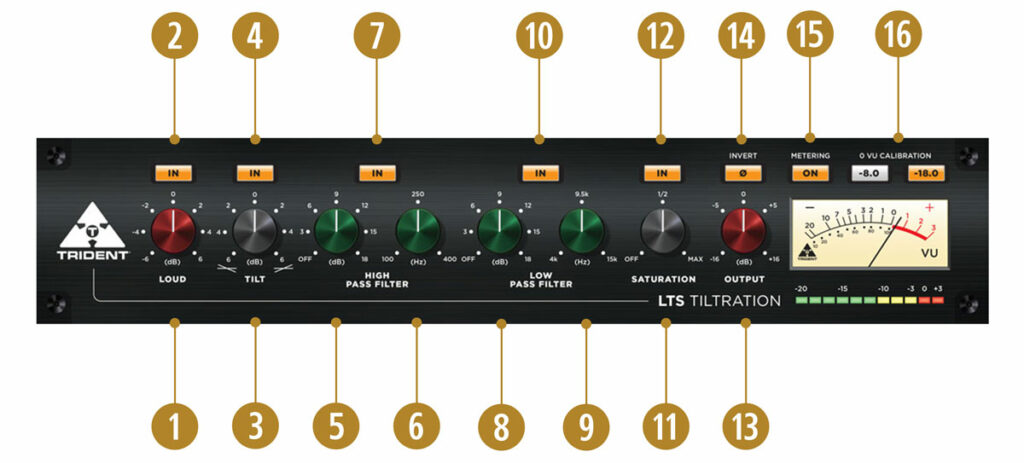
Plug-in Features and Controls
1. LOUD
A color-coded (red) knob provides controls for loudness compensation within the range of -6 to +6 (cut/boost intensity level). Click the knob and drag up to increase the value and drag down to decrease. Alternatively, double-click on the rotary knob to manually enter a value.
2. LOUD BYPASS
Press the IN button above the LOUD control to enable (backlight on) or disable (backlight off) the loudness compensation function.
3. TILT
A color-coded (black) knob provides controls for tilt equalization within the range of -6 to +6 (cut/boost intensity level). Click the knob and drag up to increase the value (favoring high frequencies) and drag down to decrease (favoring low frequencies). Alternatively, double-click on the rotary knob to manually enter a value.
4. TILT BYPASS
Press the IN button above the TILT control to enable (backlight on) or disable (backlight off) the Tilt equalization function.
5. HIGH PASS FILTER – Slope (dB)
A color-coded (green) rotary knob sets the high pass filter slope in dB per octave, within the range of 0 dB/Off (Off=default) to 18 dB. Click the knob and drag up to increase the value and drag down to decrease. Alternatively, double-click on the rotary knob to manually enter a value.
6. HIGH PASS FILTER – Frequency (Hz)
A color-coded (green) rotary knob sets the high pass corner frequency within the range of 100 Hz to 400 Hz. Click the knob and drag up to increase the frequency and drag down to decrease. Alternatively, double-click on the rotary knob to manually enter a value.
7. HIGH PASS FILTER – Bypass
Press the IN button above the HPF controls to enable (backlight on) or disable (backlight off) the high pass filter function.
8. LOW PASS FILTER – Slope (dB)
A color-coded (green) rotary knob sets the low pass filter slope in dB per octave, within the range of 0 dB/Off (Off=default) to 18 dB. Click the knob and drag up to increase the value and drag down to decrease. Alternatively, double-click on the rotary knob to manually enter a value.
9. LOW PASS FILTER – Frequency (Hz)
A color-coded (green) rotary knob sets the low pass filter corner frequency within 4 kHz to 15 kHz. Click the knob and drag up to increase the frequency and drag down to decrease. Alternatively, double-click on the rotary knob to manually enter a value.
10. LOW PASS FILTER – Bypass
Press the IN button above the LPF controls to enable (backlight on) or disable (backlight off) the low pass filter function.
11. SATURATION
A color-coded (black) rotary knob sets the saturation enhancement level within the range of 0 (MIN) and 100 (MAX). Click the knob and drag up to increase the value and drag down to decrease. Alternatively, double-click on the rotary knob to manually enter a value.
12. SATURATION Bypass
Press the IN button above the SATURATION control to enable (backlight on) or disable (backlight off) the saturation enhancement function.
13. OUTPUT
A color-coded (red) rotary knob sets the output gain level within the range of -16 dB to +16 dB. Click the knob and drag up to increase the value and drag down to decrease. Alternatively, double-click on the rotary knob to manually enter a value.
14. POLARITY (Ø)
Press the Ø button above the OUTPUT control to invert the signal polarity (backlight on) or maintain the current polarity (backlight off).
15. METERING
Press the ON button above the VU meter to enable (backlight on) or disable (backlight off) the VU and PPM metering functions.
16. 0 VU CALIBRATION
Use the -8.0 or -18.0 radio buttons above the VU meter to toggle between a 0 VU calibration level of -8.0 dBFS or -18 dBFS respectively. NOTE: Calibration applies to the VU meter only; the PPM meter range is mapped directly to peak values between -20 and +3 dBFS.
